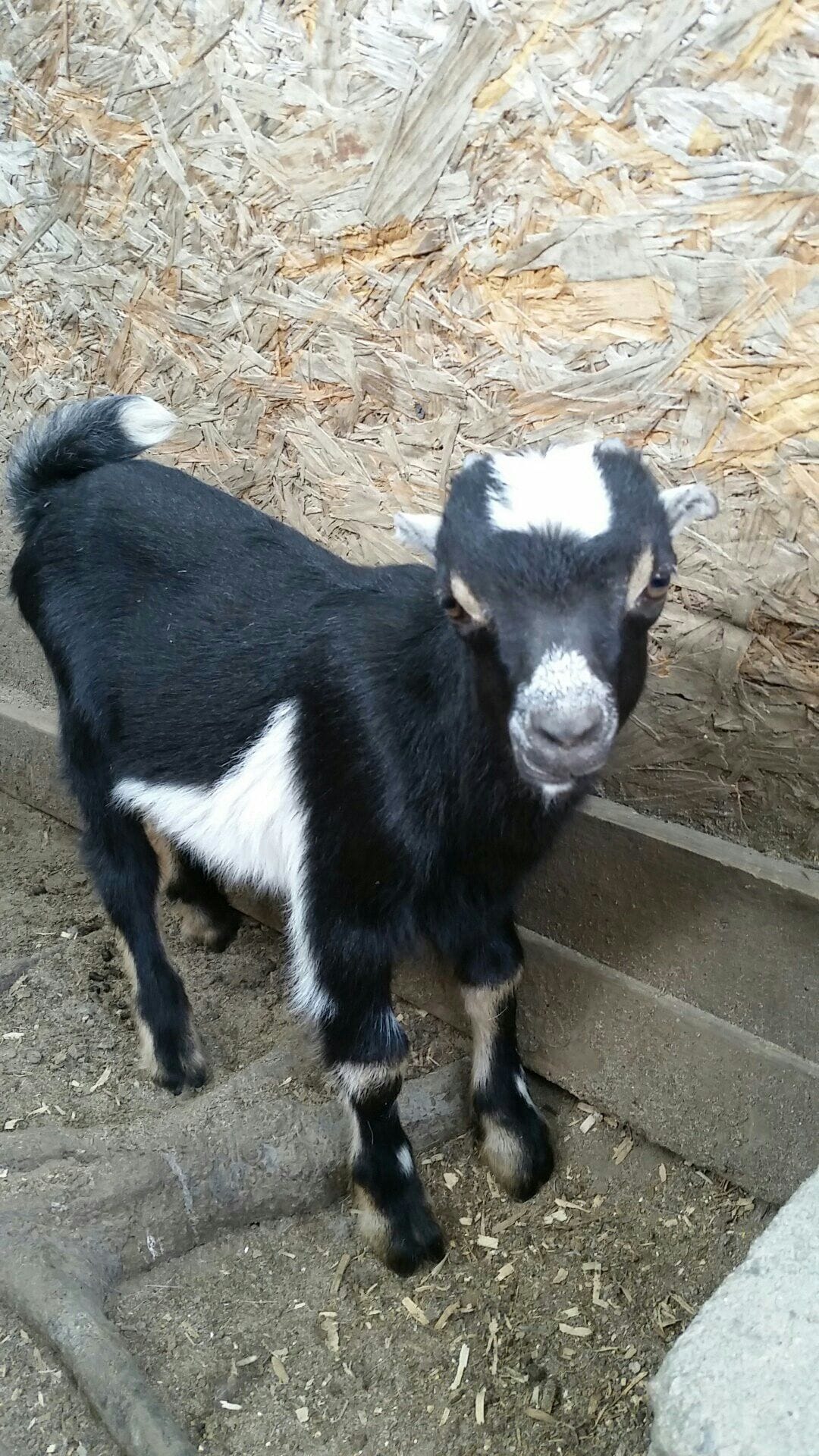Imagine a world of goats, but these aren’t any ordinary goats. They’re LaMancha goats, the special ones with their adorable ears that look like they’ve been nibbled off. They’ve got a rich history, a knack for making delicious milk, and a charm that will make you want to cuddle them all day long. Join us on an enchanting journey into the world of LaMancha goats, where we’ll learn their secrets, fall in love with their personalities, and discover why they’re so beloved by goat lovers everywhere.
Embracing the Enchantment: A Closer Look at LaMancha Goats
Ever heard of a goat with practically no ears? Meet the LaMancha, a breed that’s turning heads and winning hearts with its unique looks and amazing milk. These “Earless Wonders” are more than just a pretty face – they’re known for their gentle personalities, impressive milk production, and ability to thrive in all sorts of environments.
What Makes a LaMancha Unique?
First things first – those ears! Or lack thereof. LaManchas are instantly recognizable by their incredibly short ears, sometimes so small they seem invisible. This distinctive trait is the result of careful breeding and is a defining characteristic of the breed. But don’t let their earlessness fool you – LaManchas are anything but short on personality!
Here’s what makes them so special:
- Milk Marvels: LaMancha milk is something special. It’s naturally high in butterfat, which makes it perfect for making rich and creamy cheese, as well as other delicious dairy treats. If you’re a cheese lover, a LaMancha might be your new best friend!
- Tough Cookies: These goats are remarkably adaptable and can handle a wide range of climates, from hot, dry regions to lush pastures. They’re not picky and can make themselves at home in diverse environments.
- Gentle Giants: LaManchas are known for their calm and friendly personalities. They’re generally easygoing and get along well with people, making them an excellent choice for both experienced goat owners and beginners.
A California Dreamin’ Origin Story
The LaMancha breed has a fascinating history that starts in California. A woman named Mrs. Eula Fay Frey is credited with playing a key role in their development. In 1958, the breed was officially recognized, and it wasn’t long before these unique goats started gaining worldwide recognition for their special qualities.
Keeping LaManchas Happy and Healthy
Like all animals, LaManchas need proper care to thrive. Here are some essentials to keep in mind:
- Home Sweet Home: LaManchas need a comfortable and safe shelter that’s large enough for them to move around freely. Good ventilation is crucial, and the shelter should protect them from extreme weather conditions, whether it’s scorching sun or freezing temperatures.
- A Balanced Diet: A healthy LaMancha is a happy LaMancha! Their diet should consist primarily of hay and pasture, with occasional grain supplements to ensure they’re getting all the nutrients they need.
- Regular Checkups: Just like us, goats need regular visits to the doctor. Routine vet checkups, vaccinations, and hoof trimming are essential for keeping them healthy and preventing potential problems down the road.
More Than Just a Pretty Face: LaMancha Versatility
Don’t let their unique looks fool you – LaManchas are incredibly versatile animals with a lot to offer:
- Fantastic Family Members: Their gentle and loving nature makes them wonderful family pets. They’re known to be affectionate and playful, bringing joy to households of all shapes and sizes.
- Homestead Helpers: LaManchas are excellent additions to homesteads. They provide fresh milk, help control weeds by grazing, and offer companionship to their human caretakers.
- Showstoppers: With their distinctive appearance and friendly personalities, LaManchas are sure to steal the show at any goat competition. They’re naturals in the ring!
The Future is Bright for LaManchas
The popularity of LaManchas is growing, and for good reason. Their unique traits and versatility make them an attractive option for various reasons:
- Miniature Marvels: Mini LaManchas, a smaller variety of the breed, are becoming increasingly popular. They offer all the charm and milk-producing capabilities of their standard-sized counterparts but in a more compact package, making them ideal for smaller properties.
- Dairy Delights: The high butterfat content in LaMancha milk makes it highly sought after by cheesemakers and dairy farmers. It adds a richness and creaminess that elevates the flavor of cheeses and other dairy products.
- Sustainable Living: LaManchas are an excellent choice for those looking for sustainable livestock options. They adapt well to smaller farms and homesteads, efficiently producing high-quality milk.
As you can see, there’s more to LaManchas than meets the eye—or ear, in this case! They’re charming, productive, and adaptable animals that continue to captivate goat enthusiasts worldwide. Whether you’re looking for a loving family pet, a productive homestead companion, or a show-stopping champion, LaManchas might just be the perfect “Earless Wonder” for you.
Unlocking the Mystery of the Earless Goat: LaMancha Ear Insights
So, you’ve probably heard about LaMancha goats, right? They’re those “earless” wonders! But are they really earless? Well, not quite. LaMancha goats do have ears, but they are remarkably tiny, often described as “gopher ears” or “elfin ears.” This unique characteristic is one of the things that makes this breed so distinctive.
Why the Tiny Ears? The Genetics Behind the “Earless” Look
The secret to the LaMancha’s ear size lies in their genes. A specific gene, which happens to be dominant, dictates their ear size. This means that even if a LaMancha goat inherits the gene from just one parent, they’ll sport those characteristically small ears. This dominant gene is a key factor that breeders consider when aiming to maintain the breed’s standard.
Two Ear Types: Gopher and Elfin
Did you know there are actually two recognized ear types within the LaMancha breed?
- Gopher Ears: These are the tiniest of ears, maxing out at about an inch long. They have minimal cartilage, and their edges can fold up or down. For registered LaMancha bucks (males), gopher ears are a requirement.
- Elfin Ears: As the name suggests, elfin ears are a bit larger than gopher ears, but they are still significantly smaller than the ears you’d see on other goat breeds.
The Downside of Tiny Ears: Ear Health
While their diminutive ears are undeniably endearing, they do come with a potential drawback – a higher risk of ear infections. Those floppy ears that other goats have actually serve a purpose beyond aesthetics. They help keep dirt, debris, and excess moisture out of the ear canal.
LaManchas, with their reduced ear size, are a bit more exposed to the elements, making them more prone to these pesky infections. This doesn’t mean that every LaMancha will have constant ear problems, but it does mean that owners need to be extra vigilant about ear care.
Here are a few tips:
- Regular Ear Cleaning: Make it a habit to check and clean your LaMancha’s ears regularly, especially after they’ve been playing in dusty areas or getting wet.
- Be Observant: Keep a watchful eye (or ear!) out for any signs of trouble, such as head shaking, discharge from the ears, or any signs of discomfort.
- Vet Checkups: Regular veterinary checkups are essential for any goat, but even more so for LaManchas. Your vet can help ensure their ears stay clean and healthy and address any potential issues early on.
Beyond the Ears: LaMancha Personality Plus
It’s easy to get caught up in those adorable (or to some, unusual) ears, but LaManchas are so much more than their ear size. One of their most celebrated traits is their incredibly docile and gentle nature. They are often described as being friendly, easy to handle, and even a bit less stubborn than some of their goat brethren. This makes them a popular choice for families and for people who are new to the goat-owning world.
There is debate on whether their smaller ears affect their hearing. Some experts suggest that they may have slightly reduced hearing compared to other goats. It’s important to remember that goats rely on a variety of senses, including sight and smell, to navigate their world, so even if their hearing is mildly affected, they can still live full and happy lives.
Unveiling the Unique Charms of LaMancha Goats
LaMancha goats are like the friendly, quirky neighbors of the goat world, instantly recognizable with their uniquely short ears. These ears, sometimes called “gopher” or “elfin” ears, aren’t just a cute quirk; they’re a result of specific breeding and are actually what makes this breed stand out in a pasture full of goats.
But their charm goes beyond their looks. LaManchas are known for producing absolutely incredible milk. What makes it so special? Well, it’s naturally high in butterfat, which basically means it’s perfect for making super-rich and creamy cheeses and yogurts. If you’re into homemade dairy delights, these goats might be your new best friends!
And if you’re thinking about getting goats for the first time, you’ll be happy to know that LaManchas are famous for being total sweethearts. They’re generally known to be calm and friendly, making them a great choice for families with kids or even just folks who are new to the whole goat-owning thing. They’re generally less likely to be stubborn than some other goat breeds, which is always a plus!
One of the things that makes LaManchas so adaptable is their ability to handle different climates. Whether it’s the sunny fields of California, where they were first bred, or a cooler, more temperate region, these goats seem to thrive wherever they go. This makes them a practical choice for farms and homesteads all over.
Speaking of their origins, the LaMancha breed has a pretty cool history. They were actually developed right here in the United States – California, to be exact – by a woman named Eula Fay Frey back in the mid-1900s. Since then, they’ve become popular not just in America, but with goat enthusiasts around the world. It’s safe to say that with their unusual looks, amazing milk, and friendly personalities, LaMancha goats have definitely earned their place in the hearts of many.
LaMancha Goat Size: From Miniature Marvels to Standard Stunners
Curious about the size of these “earless” wonders? LaMancha goats, known for their incredibly short ears, actually come in different sizes, offering options for farms and families of all kinds. Let’s explore the world of LaMancha goat size, from the standard to the miniature.
Standard LaMancha Size: A Closer Look
Standard LaManchas fall into the medium to large goat category. Just like with many animals, the males, or “bucks,” are generally larger than the females, or “does.”
LaMancha Buck (Male):
- Height: A mature LaMancha buck can reach heights of 30 inches or more at the withers. (The withers is the highest point on a goat’s back, just before the neck).
- Weight: When it comes to weight, these bucks can be quite hefty! To be registered, a LaMancha buck must weigh at least 155 pounds, and many will reach weights of 165 pounds or more. That’s about the size of a slim adult human!
LaMancha Doe (Female):
- Height: LaMancha does are a bit more petite than their male counterparts. They generally stand around 28 inches or more at the withers.
- Weight: A mature doe will typically weigh around 130 pounds or more. Like the bucks, a minimum weight of 130 pounds is required for doe registration.
Miniature LaMancha: Compact Charm
If you’re looking for a slightly smaller version of the LaMancha, you’re in luck! Miniature LaManchas offer all the charm and personality of their standard counterparts, but in a more compact package. While specific height and weight standards for Miniature LaManchas might vary slightly depending on who you ask, they are notably smaller than standard LaManchas.
What Influences a LaMancha Goat’s Size?
Several factors can influence how big a LaMancha goat will get. It’s a bit of a nature and nurture equation!
- Genetics: Just like with humans, genetics play a significant role in determining a LaMancha goat’s size. Their parents’ size and the lineage of their bloodline can influence how large (or small) they’ll grow.
- Nutrition: A balanced diet is essential for any animal’s growth and development. Providing your LaManchas with the proper nutrition — hay, fresh water, minerals, and occasional supplemental feed — is crucial for them to reach their full size potential.
- Overall Health: A healthy goat is more likely to grow to a healthy size. Regular veterinary care, proper parasite control, and a clean living environment all contribute to a LaMancha’s overall well-being, which can impact their growth.
LaMancha Size and Your Space: What You Need to Know
If you’re considering welcoming LaManchas into your life, it’s important to factor in their size, especially if you’re opting for the standard size. These are active goats and need space to roam, graze, and play.
- Space Recommendations: A good rule of thumb is to provide at least 20 square feet of space per goat. This ensures they have enough room to move around comfortably.
- Fencing: LaManchas can be quite the escape artists! Ensure you have sturdy fencing that is tall enough to keep them contained. They are strong and can be quite determined if they want to explore beyond their designated area.
Key Points about LaMancha Goats:
- Distinctive Appearance: Known for their short ears, giving them the nickname “Earless Wonders.”
- Milk Marvels: Produce milk with high butterfat content, ideal for making cheese and other dairy products.
- Adaptable Nature: Can thrive in various climates, from hot and dry to lush pastures.
- Gentle Giants: Known for their calm and friendly personalities, making them easy to handle for both experienced and beginner goat owners.
- Developed in California: Originated from a woman named Mrs. Eula Fay Frey in 1958.
- Proper Care: Require a comfortable shelter with good ventilation, a balanced diet, and regular vet checkups.
- Versatile Animals: Can serve as family pets, homestead helpers, showstoppers, and sustainable livestock.
- Growing Popularity: Mini LaManchas and their high-quality dairy offerings are increasing their appeal.
- Symbol of Sustainability: Adapt well to smaller farms and homesteads, producing high-quality milk efficiently.
In addition to the fascinating world of LaMancha goats, did you know there are other amazing animal encounters to be had? For those looking for a unique experience, the John Ball Zoo Lantern Festival offers the chance to see illuminated sculptures and immersive light displays amidst the zoo’s resident animals. And if you’re a nature enthusiast, exploring the vast Kiamichi Mountains in Oklahoma will reward you with breathtaking views, hiking trails, and a glimpse into the state’s diverse landscape.
- Crypto Quotes’ Red Flags: Avoid Costly Mistakes - June 30, 2025
- Unlock Inspirational Crypto Quotes: Future Predictions - June 30, 2025
- Famous Bitcoin Quotes: A Deep Dive into Crypto’s History - June 30, 2025
















